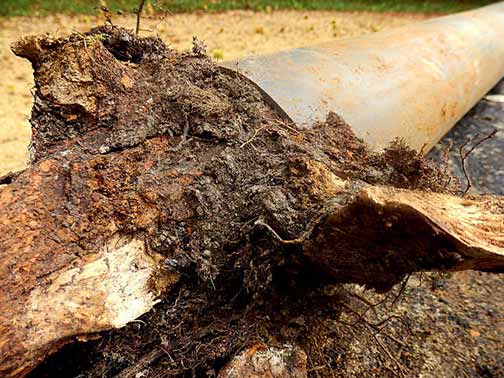
For homeowners, one of the lesser known but significant challenges is the intrusion of tree roots into plumbing systems. Tree roots are naturally drawn to water sources, which makes them a persistent threat to the integrity of your plumbing. Understanding how this process works is the first step in safeguarding your home.
How Tree Roots Find Their Way Into Pipes
Tree roots are always in search of moisture and nutrients to support the tree’s growth. Sewer lines and water pipes, which often carry water and nutrients, become attractive targets. Roots detect tiny leaks and condensation from pipes, and they follow these moisture trails, eventually entering through small cracks, joints, or gaps in the plumbing.
Signs of Tree Root Intrusion in Plumbing
Detecting tree root intrusion early can save you from costly repairs. Homeowners should be aware of the following signs:
- Slow Draining: If water is taking unusually long to drain from sinks, toilets, and bathtubs.
- Frequent Clogs: Recurring blockages that are resistant to typical unclogging methods.
- Gurgling Sounds: Strange noises coming from the plumbing system when water is used.
- Unpleasant Odors: Foul smells emanating from the drains or outside near the sewer line.
Risks and Damages Caused by Tree Roots in Plumbing
Tree root intrusion is more than just an inconvenience; it poses several risks and can lead to extensive damage:
- Pipes Blockage: Roots can grow densely inside pipes, leading to blockages that disrupt water flow and drainage.
- Structural Damage: As roots grow and expand, they can cause pipes to crack, break, or even collapse.
- Sewage Backups: Severe blockages can cause sewage to back up into the home, presenting health hazards and requiring immediate attention.
- Costly Repairs: Fixing root-damaged plumbing can be expensive, often requiring excavation and replacement of damaged pipes.

Licensed plumbers and arborists have the expertise to diagnose issues accurately and recommend appropriate solutions.
Preventing Tree Root Intrusion in Plumbing
Preventive measures are crucial in protecting your plumbing from tree root intrusion. Homeowners can take the following steps to safeguard their systems:
- Mindful Planting: Avoid planting trees with aggressive root systems near sewer lines and water pipes.
- Regular Inspections: Periodically inspect plumbing systems using professional services to detect early signs of intrusion.
- Root Barrier Installation: Install physical barriers around pipes to prevent roots from reaching the plumbing.
- Pipe Maintenance: Use modern, root-resistant pipe materials that are less prone to cracking and intrusion.
Effective Solutions for Existing Tree Root Problems
In cases where tree roots have already invaded the plumbing system, several solutions can help mitigate the damage:
- Hydro Jetting: High-pressure water jets can effectively clear roots from pipes without damaging the infrastructure.
- Mechanical Augers: Specialized equipment to cut and remove roots within the pipes.
- Chemical Treatments: Root-killing chemicals can be used to prevent further growth without harming the tree.
- Pipe Lining: Inserting a new liner inside the existing pipe to seal cracks and prevent future leaks.
Working with Professionals
Given the complexity and potential severity of tree root intrusion in plumbing, working with skilled drain cleaning specialists is often necessary. Licensed plumbers and arborists have the expertise to diagnose issues accurately and recommend appropriate solutions. Regular maintenance checks and timely interventions can save substantial costs and prevent extensive damage.
Tree roots and plumbing systems can be at odds, but with awareness and proactive measures, homeowners can protect their homes from the adverse effects of root intrusion. Regular inspections, preventive landscaping, and prompt professional intervention are key to maintaining a healthy, functional plumbing system. By staying informed and vigilant, you can ensure that both your trees and your plumbing thrive without encroaching on each other.



